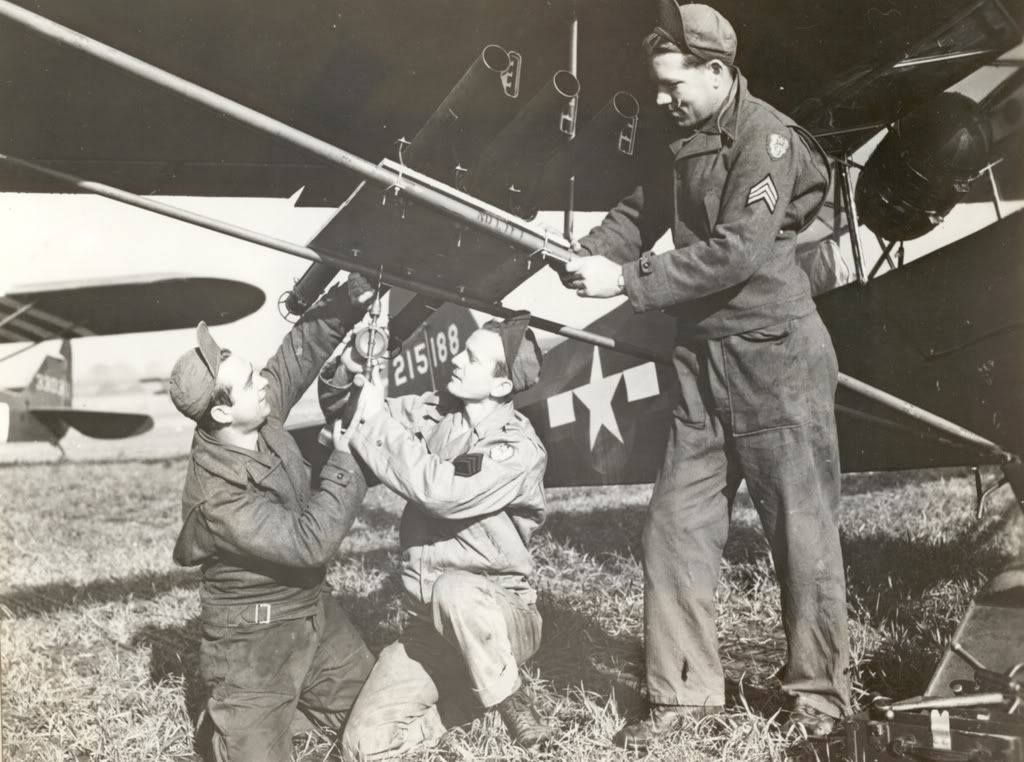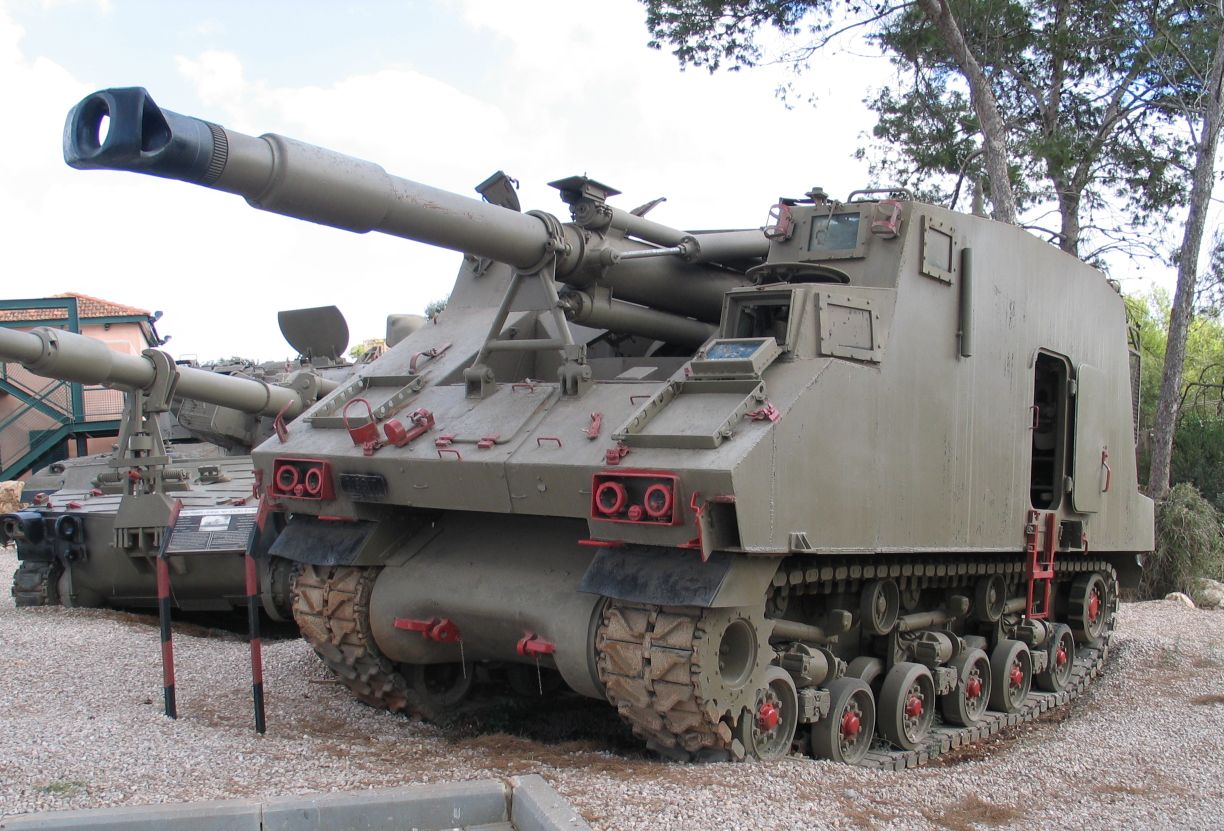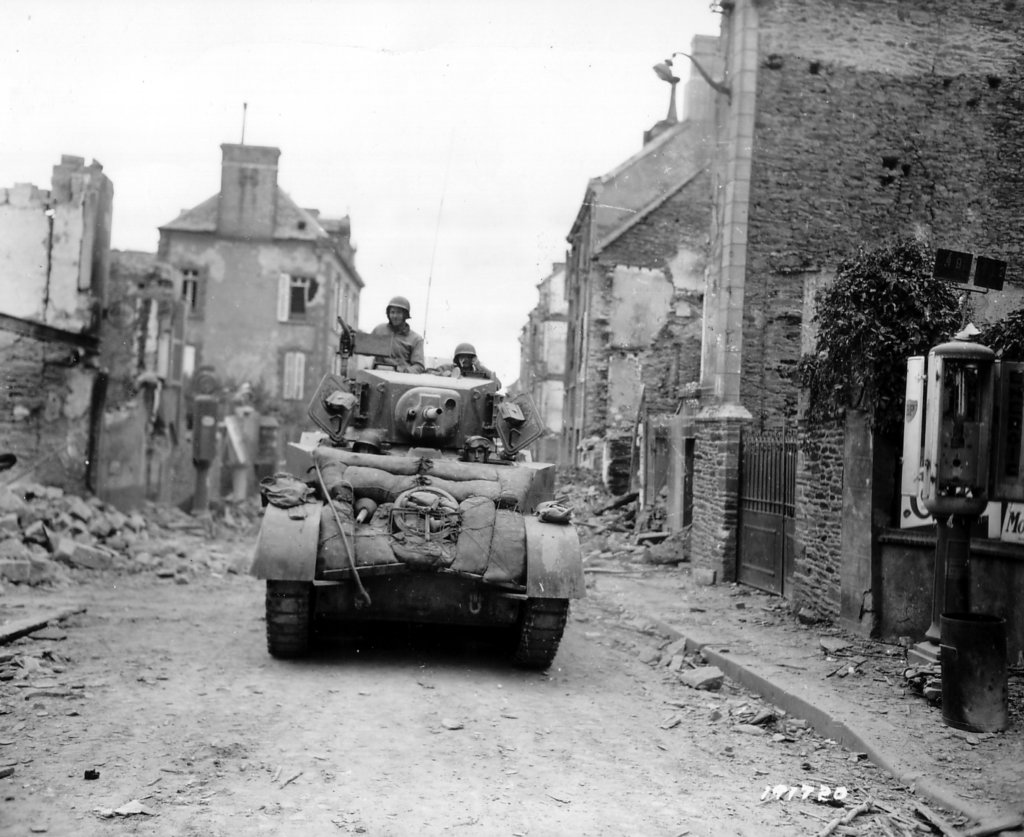Skip to comments.
Nazi Germany’s Panzer Corps Faked It ‘Til It Made It
War is Boring ^
| December 27, 2015
| David Axe
Posted on 12/28/2015 10:27:21 AM PST by C19fan
The terms of the Versailles Treaty that ended World War I prohibited Germany from joining Great Britain, France and other major powers in developing tanks — those heavily-armed, thickly-armored tracked vehicles that had debuted late in the conflict and had helped to break the stalemate of trench warfare.
But the tank ban didn’t actually stop Nazi Germany from inventing new tanks and refining tactics for their use. Instead, the treaty limitations pushed German armored vehicle development into the military-industrial shadows. In the decades before Panzers swept across Europe and the Soviet Union, the Panzerwaffe armored corps evolved in secrecy.
(Excerpt) Read more at warisboring.com ...
TOPICS: History; Military/Veterans
KEYWORDS: armored; davidaxe; germany; tanks; warfare; warisboring; ww2
Navigation: use the links below to view more comments.
first previous 1-20 ... 101-120, 121-140, 141-160, 161-168 next last
To: central_va
A tanker had two choices if they saw a Tiger. Unless they out numbered the Tiger more the 6 to 1; Runaway! Two other good choices; first:
Foxtrot Shooter 28 THIS IS Foxtrot Treadhead63, IMMEDIATE SUPPRESSION, GRID NK453215, OVER. TIGER TANK IN TREE COVER. FIRE FOR EFFECT. [now wait about 30, 40 seconds.....]
Other choice, if Division [or Battalion] Artillery is busy, and you're lucky enough to have your bestest friend ever happen to be in the neighborhood:
"Treadhead 63 This is Grasshopper Rosie Six inbound your location. I say again inbound your location will arrive in 2 minutes mark target over.
Grasshopper Rosie Six, this is Treadhead 63, roger, marking target identify smoke Over" Six-three this is Romeo Six I see yellow smoke I say again I identify yellow smoke, can you mark him with some willy pete over?
Romeo Six this is Six-three yellow smoke, afffirmative, target is east, I say again east of yellow smoke, watchg for white willy pete....
BAM! Clang! BAM! Clang!
Six-three, this is Rosie, On the Way, firing six. Watch for strikes, call my misses.

[Yep, there are a couple of things off in this dialogue. But you get the picture.] Speaking of pictures:


121
posted on
12/29/2015 8:30:27 AM PST
by
archy
(Whatever doesn't kill you makes you stronger. Except bears, they'll kill you a little, and eat you.)
To: archy
Just read this amazing story in an e-mail. Improvise. Adapt. Overcome.
122
posted on
12/29/2015 8:32:37 AM PST
by
TADSLOS
(A Ted Cruz Happy Warrior! GO TED!)
To: Riley
I read an interview with a Sturmgeschutz crewman, he liked the late models III better than the IV. The Finns thought the same, and far preferred the STUGIII to the later StugIV. They also had the interesting variation of usually removing the belt-fed German MG34 and MG42 machineguns from their STUGs and replacing them with drum magazine-fed captured Russian DT machineguns. This may be because the 7,62x54 Russian ammo was both plentiful and available for free from dead Russians, or could have been because the lubricating oil used on the finely-machined MG34 was not very compatible with the cold weather of war on and near the Arctic Circle, and the MG42 just went through belts and barrels too jolly fast.

Finn stugok akcióban
123
posted on
12/29/2015 8:39:43 AM PST
by
archy
(Whatever doesn't kill you makes you stronger. Except bears, they'll kill you a little, and eat you.)
To: central_va; raybbr
124
posted on
12/29/2015 8:45:19 AM PST
by
archy
(Whatever doesn't kill you makes you stronger. Except bears, they'll kill you a little, and eat you.)
To: Axenolith; Darksheare; snippy_about_it
Note to self, post quickly on FR tank threads ;-)Achtung! Treadhead ping!
125
posted on
12/29/2015 8:48:45 AM PST
by
archy
(Whatever doesn't kill you makes you stronger. Except bears, they'll kill you a little, and eat you.)
To: Oztrich Boy
The Israelis got up to 105mm in the 60s, and that's probably the limit of what was possible Think SP artillery on Sherman chassis, with the turret removed. Gun/howitzers to 155, mortars to 160mm.


126
posted on
12/29/2015 8:52:37 AM PST
by
archy
(Whatever doesn't kill you makes you stronger. Except bears, they'll kill you a little, and eat you.)
To: LS
You play World of Tanks? Not really a tank game, more an arcade game but still fun since you get to drive tanks
127
posted on
12/29/2015 8:55:27 AM PST
by
MNJohnnie
( Tyranny, like Hell, is not easily conquered)
To: LS
M5 Stuart:

128
posted on
12/29/2015 8:59:07 AM PST
by
PLMerite
(The Revolution...will not be kind.)
To: PLMerite
That’s the one I was thinking of.
129
posted on
12/29/2015 9:05:10 AM PST
by
LS
("Castles Made of Sand, Fall in the Sea . . . Eventually" (Hendrix))
To: C19fan
I'm reminded of my youth and a fascination with model tanks.

130
posted on
12/29/2015 9:12:38 AM PST
by
McGruff
(I'm thinking)
To: archy
They still have runners, I see them on Youtube from time to time.
131
posted on
12/29/2015 9:23:02 AM PST
by
Riley
(The Fourth Estate is the Fifth Column.)
To: Riley
"They still have runners, I see them on Youtube from time to time."
They just dragged a running Panther and a PAK 88 out of some guy's basement in Germany not too long ago.


132
posted on
12/29/2015 9:27:18 AM PST
by
PLMerite
(The Revolution...will not be kind.)
To: LS
Yes, as I noted above. I was thinking of a true light tank, which got chewed up in N. Africa, the Stuart. Had a 37mm gun. Aka the Honey to the Brits- and also used by the US in North Africa until the later M5 version came along:
On 26 September 1942, Company A, 70th Armor sailed from Ft Dix, New York. With stops at Belfast, Northern Ireland, Greenock, Scotland, and Inverary, Scotland, the company was preparing to land with the 39th Regimental Combat Team, 9th Infantry Division at Algiers as part of Operation Torch.
The 70th Tank Battalion landed in North Africa not as a battalion, but as three widely dispersed companies, each attached to a separate assault element and all landing on 8 November 1942. The battalion headquarters and "residue" initially remained in the United States.
Company A landed with the 2nd Battalion, 39th Infantry Regiment, 9th Infantry Division at Algiers, part of the Eastern Task Force of Operation Torch.Initial ground combat was light, but the company faced repeated air raids when it began guarding the Glida airport. Company A had light duties in Algiers until they reported to Col. Edson Raff and the 509th Parachute Infantry Regiment at Fériana, Tunisia. The attachment to the 509th was brief, and Company A soon found itself primarily attached to French combat units, and occasionally British, in the vicinity of the Ousseltia Valley for the remainder of the North African campaign. Along with Company A, 601st Tank Destroyer Battalion, the company was the only American unit in the sector. As Allied units closed on Bizerte and Tunis in the final stages of the campaign, German and Italian troops preferred to surrender to the company of American light tanks rather than the British or French. The estimate of prisoners taken by Company A between 11–13 May 1943 tallied between 17–20,000. Company A had clearly impressed their French allies: 25 men received the Croix de Guerre and the company was selected as the honor guard for the international victory parade in Tunis on 20 May. Finally in June 1942, Company A rejoined the rest of the 70th Tank Battalion at Arzew, Algeria.
Company B landed with the 47th Regimental Combat Team of the 9th Infantry Division at Safi, Morocco in order to secure the port. The port was needed to facilitate unloading the medium tanks of the 2nd Armored Division so they could advance on the primary objective at Casablanca. Meeting only light resistance, the company suffered no casualties and the port was secured by 1530. The company remained in place while a larger force built around the 3rd Infantry Division moved toward Casablanca. Shortly thereafter, Company B moved through Casablanca and rejoined Company C near Port Lyautey.
Company C's objective, the all weather airport at Port Lyautey, was to have been taken on 8 November. However, the company was put ashore at Mehdya Plage, three miles from the intended landing site. Due to this navigational error and the more spirited response from the French defenders than at the other landing sites, the airfield did not fall until 11 November. With their assault role completed, Company C reverted to routine duties near Port Lyautey. After Company B rejoined them, the two companies remained in the area through January 1943.
When the tank companies deployed for North Africa, the battalion headquarters and other elements remained in Fort Bragg, North Carolina until 1 January 1943. The remainder of the battalion decamped for New York and boarded the SS Santa Rosa at Staten Island on 13 January. The Santa Rosa docked at Casablanca on 29 January 1943. With most of the battalion (still minus Company A) now reunited, the 70th Tank Battalion moved by rail from Casablanca to Tlemcen, Algeria on 4 February 1943. At Tlemcen, the battalion was made responsible for training Free French soldiers who later formed much of the cadre of the 2nd French Armored Division. It continued in this role until May 1943, when it was ordered to proceed to Arzew, Algeria. There Company A finally caught up with the rest of the battalion, and the unit was all together for the first time since September 1942.
The 70th trained the French in use of their early M3 Stuarts, equipped with rotary aircraft-type engines, which the 70th then traded out for M5 Stuarts with Cadillac engines and a gyrostabilized 37mm gun mount. That was the beginning; the 70th went on to make five amphibious landings, including D-Day at Normandy's Utah beach, not quite the meatgrinder for US troops that Omaha Beach was in part because the 70th's Sherman's with bulldozer blades rolled up an awful lot of the German resistance; main gun and co-ax machinegun fire from 75 yards helped a good bit more. When they fought for the first time as a battalion during the Operation Husky landings on Sicily, and used the lessons learned in North Africa to fight their M5 light tanks effectively against much heavier German armor, on one occasion destroying nine Mark IV tanks without losing a tank. D company remained equipped with the light Stuarts [sometimes with a 2.36" M1 bazooka hung under the 37mm gun tube and fired electrically with the otherwise-neglected horn button] It was D company that linked up with the American Airborne units on the Carentin Peninsula and resupplied them- you'll never hear a paratrooper or 70th Tanker say they were *rescued* or *relieved.* And again in 1944 during the Battle of the Bulge, it was the 70th's D Company out in front as a reconnaissance screen in their fast little M5s that first broke through to the surrounded paratroopers- and resupplied them.


In all, the 70th's tankers have made more major amphibious tank landings than any other Army or USMC tank unit. With 13 unit awards and 22 campaign streamers, the 70th Armor Regiment is the most oldest independent tank regiment and most decorated armor unit in the United States Army.
I could go on about Korea, Germany on the Iron Curtain [outnumbered 17-1 by the Soviet Eighth Guards Army] or Desert Storm, or Iraqi Freedom, or Afghanistan. But you get the picture. And I don't have to tell you what outfit I was in, do I?


133
posted on
12/29/2015 9:32:13 AM PST
by
archy
(Whatever doesn't kill you makes you stronger. Except bears, they'll kill you a little, and eat you.)
To: miliantnutcase
Hitler had the V2 rocket. That was a very scary weapon. If he could have put a stronger payload on the rocket and had more of them, it could have changed the outcome. But again, the Allies controlled the air by the end of the war, and would have found the launching pads.
Lots of ifs in the war, but in the end again Germany just didn't have enough men and materiel. And remember the U.S. and Britain had millions of men fighting in the Pacific and Asia against the Japanese. Just imagine one or two million U.S. Marines fighting in Europe.
134
posted on
12/29/2015 9:36:32 AM PST
by
driftless2
(For long term happiness, learn how to play the accordion)
To: TADSLOS
Just read this amazing story in an e-mail. From 1960 to 1964 Colonel Carpenter was my first primary flight instructor at Grimes and Willard airports in Illinois, mostly in Aeronca 7AC Champs, Stinson Sentinels and a Piper Pacer taildragger, but I also logged eight hours with him in a L4 Piper Cub [no rockets mounted on it, unfortunately] before I joined the Army in '66, the year he passed away.
Improvise. Adapt. Overcome
In the absence of orders, go find something and kill it. He said it was the smartest thing a general ever said.
135
posted on
12/29/2015 9:45:04 AM PST
by
archy
(Whatever doesn't kill you makes you stronger. Except bears, they'll kill you a little, and eat you.)
To: archy
Unless it is a direct hit or really close(flip over)I don’t think artillery is going to take out a Tiger.
136
posted on
12/29/2015 9:46:02 AM PST
by
central_va
(I won't be reconstructed and I do not give a damn.)
To: PLMerite
I saw that. Wasn’t any secret that he had them (and other goodies). I’ve read that it was all proper with the law at the time- he used to drive the Panther around in parades in town. Heard it said that everything was demilled, but I guess that wasn’t good enough.
137
posted on
12/29/2015 10:01:47 AM PST
by
Riley
(The Fourth Estate is the Fifth Column.)
To: Riley
They still have runners, I see them on Youtube from time to time. Did you hit that yootoob link under the pic?
138
posted on
12/29/2015 10:06:38 AM PST
by
archy
(Whatever doesn't kill you makes you stronger. Except bears, they'll kill you a little, and eat you.)
To: Riley
Heard it said that everything was demilled, but I guess that wasn’t good enough Probably caught him whistling Erika at a funeral. [Yes, that'll get you arrested in red socialist Germany].
139
posted on
12/29/2015 10:12:34 AM PST
by
archy
(Whatever doesn't kill you makes you stronger. Except bears, they'll kill you a little, and eat you.)
To: central_va
Unless it is a direct hit or really close(flip over)I don’t think artillery is going to take out a Tiger. 75s maybe not, though the armor is thinnest on the bottom and top. 105s, I wouldn't bet on it- 15-20 pounds of HE going bang atop a couple hundred gallon gasoline tank- both American and German tanks- can be real hazardous to your health.
And a German 15 CM/ Soviet 152mm/US 155 round? No thank you very much!
140
posted on
12/29/2015 10:18:35 AM PST
by
archy
(Whatever doesn't kill you makes you stronger. Except bears, they'll kill you a little, and eat you.)
Navigation: use the links below to view more comments.
first previous 1-20 ... 101-120, 121-140, 141-160, 161-168 next last
Disclaimer:
Opinions posted on Free Republic are those of the individual
posters and do not necessarily represent the opinion of Free Republic or its
management. All materials posted herein are protected by copyright law and the
exemption for fair use of copyrighted works.
FreeRepublic.com is powered by software copyright 2000-2008 John Robinson













